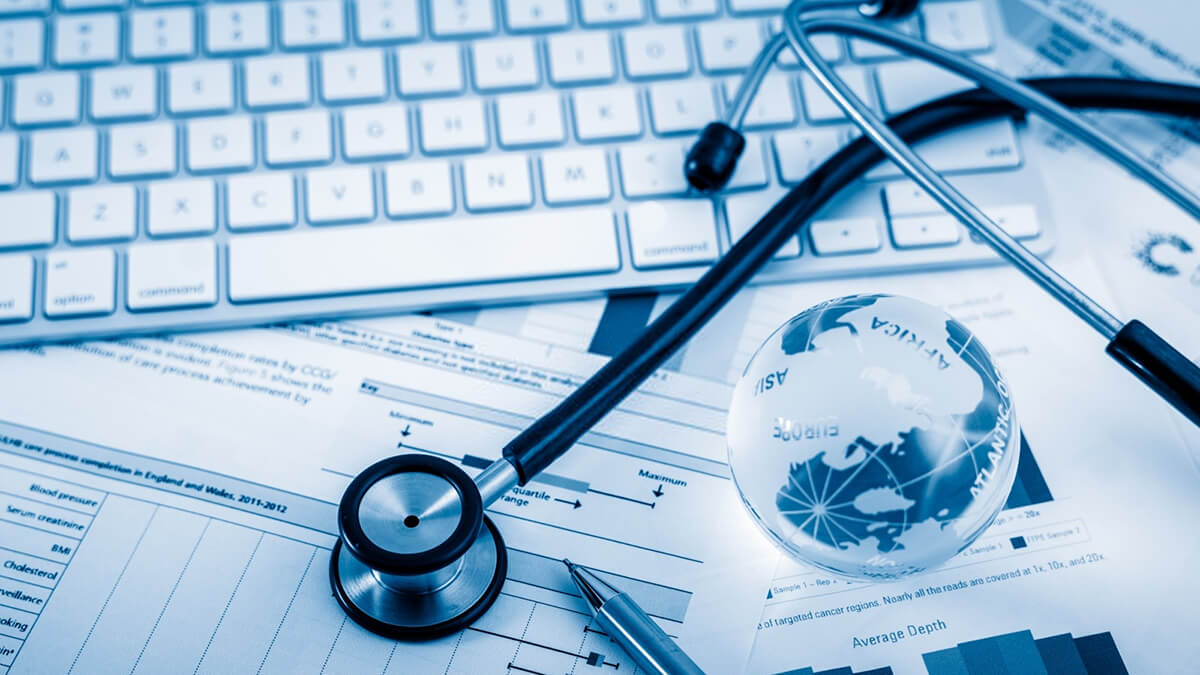Leading Skills Required to Master Medical Administration Roles Today
Leading Skills Required to Master Medical Administration Roles Today
Blog Article
Finest Practices in Medical Management for Improving Efficiency and Decreasing Prices
In the ever-evolving landscape of health care, the pursuit of best techniques in medical administration is extremely important for boosting effectiveness and suppressing costs. By integrating innovative innovations such as electronic wellness documents and telemedicine, medical care companies can improve procedures and boost individual treatment.
Leveraging Advanced Innovation
In today's quickly progressing health care landscape, leveraging innovative innovation is no longer optional however important for reliable clinical administration. The assimilation of electronic services into health care systems has actually transformed the method facilities operate, improving procedures and improving person care. Electronic Health Records (EHRs) are critical, supplying comprehensive client information that can be accessed instantaneously by licensed workers, hence decreasing redundancy and decreasing mistakes. By streamlining patient info, EHRs remove the requirement for cumbersome documents and help with smooth interaction amongst doctor.
Telemedicine is an additional technological advancement that has transformed client communication. It uses convenience for both patients and healthcare professionals by allowing remote assessments, which can lower the need for in-person brows through and optimize consultation scheduling. In addition, telehealth platforms can prolong health care accessibility to country or underserved areas, linking voids in care delivery.
Furthermore, using Expert system (AI) and artificial intelligence is becoming significantly common in predictive analytics, enabling very early detection of prospective health and wellness concerns and even more educated decision-making. These innovations, when incorporated efficiently, can improve analysis precision and individualize individual treatment strategies, inevitably leading to improved medical care outcomes and operational performance.
Optimizing Source Allotment
By purposefully managing resources such as personnel, devices, and finances, medical care centers can considerably improve their operational performance, enhance person results, and decrease unneeded expenditures. The initial action in optimizing resource allowance includes conducting an extensive analysis of existing possessions and identifying areas where resources may be underutilized or exhausted.
Prioritizing resource allowance based on client demands and service needs is necessary. This includes aligning sources with high-demand areas, such as emergency situation care or specialized treatments, to ensure timely and effective individual treatment. Applying adaptable staffing designs can likewise enhance labor resources by adjusting workers appropriation in response to fluctuating individual quantities. In addition, welcoming telemedicine and other technical remedies can reduce physical source restrictions by offering alternate methods for patient-provider interactions.
Financial sources must be diligently monitored and allocated with critical insight to support both temporary functional requirements and lasting institutional goals. This includes investing in training programs that boost personnel competencies and adopting energy-efficient methods that lower operational costs (medical administration). Inevitably, an enhanced source appropriation method fosters a lasting medical care atmosphere that is responsive, efficient, and monetarily sensible
Streamlining Workflow Processes
When medical care facilities objective to enhance functional efficiency, streamlining process procedures comes to be a pivotal emphasis. Reliable workflows lessen redundancy, eliminate unnecessary steps, and enhance coordination among medical care experts. This approach not only increases solution delivery yet likewise enhances the top quality of person care.

Next, innovation assimilation plays a significant role in streamlining process. Carrying out electronic wellness documents (EHRs) and electronic physician order entrance (CPOE) systems reduces paperwork, decreases human error, and ensures information comes to all pertinent personnel. In addition, leveraging telemedicine systems can enhance patient appointments and follow-ups, minimizing the pressure on physical infrastructure.

Eventually, structured operations lead to cost decreases and improved patient contentment, fostering a more lasting visit medical care environment.
Enhancing Data Management
Building upon structured process, enhancing information management ends up being a crucial element ahead of time healthcare management. Efficient information monitoring systems are vital for maintaining accurate client documents, improving decision-making, and making certain conformity with governing requirements. By applying durable information administration solutions, healthcare centers can improve the quality of individual treatment while concurrently more info here decreasing functional expenses.
One secret aspect of improving information management is the integration of innovative electronic wellness document (EHR) systems. These systems promote the smooth exchange of individual info throughout various departments, lowering replication of examinations and lessening mistakes. A well-designed EHR system sustains data analytics, making it possible for health care service providers to identify patterns and make informed choices regarding person treatment.
Furthermore, guarding patient data is vital. Adopting comprehensive cybersecurity steps, consisting of encryption and regular audits, ensures the stability and discretion of delicate details. This not only protects people however additionally maintains the institution's track record.
Purchasing personnel training is another vital factor. Educating healthcare professionals on data management techniques enhances their capacity to successfully make use of innovation, leading to boosted client results. In conclusion, improving information monitoring via innovative modern technology and extensive training is important for achieving performance and price decrease in medical management.
Fostering Collaborative Communication
A crucial part ahead of time medical administration is fostering collective communication amongst medical care specialists. Reliable communication is paramount for ensuring seamless client treatment, optimizing therapy end results, and decreasing errors. By urging open discussion and coordination throughout multidisciplinary teams, medical care organizations can boost their operational effectiveness and minimize unnecessary prices.
Central to this strategy is the assimilation of communication modern technologies such as electronic health records (EHRs) and protected messaging platforms, which promote the fast exchange of essential client info. These tools allow healthcare service providers to accessibility and share information in genuine time, making certain that all team participants are educated and lined useful source up in their decision-making processes. Furthermore, routine team meetings and interdisciplinary rounds can further advertise a society of cooperation and accountability.
Training programs focused on improving interaction abilities are likewise crucial. These programs can assist personnel develop the ability to share information plainly and pay attention actively, hence reducing misunderstandings and cultivating a helpful job atmosphere. In addition, taking on standard communication methods, such as SBAR (Situation, Background, Analysis, Recommendation), can improve the exchange of info, ensuring that important details are communicated succinctly and efficiently. Ultimately, fostering collaborative interaction brings about improved medical care shipment and price financial savings (medical administration).

Final Thought
Incorporating sophisticated innovation, such as electronic wellness documents and telemedicine, along with enhanced resource allocation and streamlined operations processes, is essential for improving effectiveness in medical management. Effective data monitoring and cultivating joint communication amongst medical care groups are important for minimizing redundancies and boosting care quality. By prioritizing preventive care and taking part in top quality enhancement initiatives, medical care organizations can achieve considerable cost savings and enhanced individual results, therefore making sure sustainable healthcare shipment in an increasingly complicated setting.
Report this page